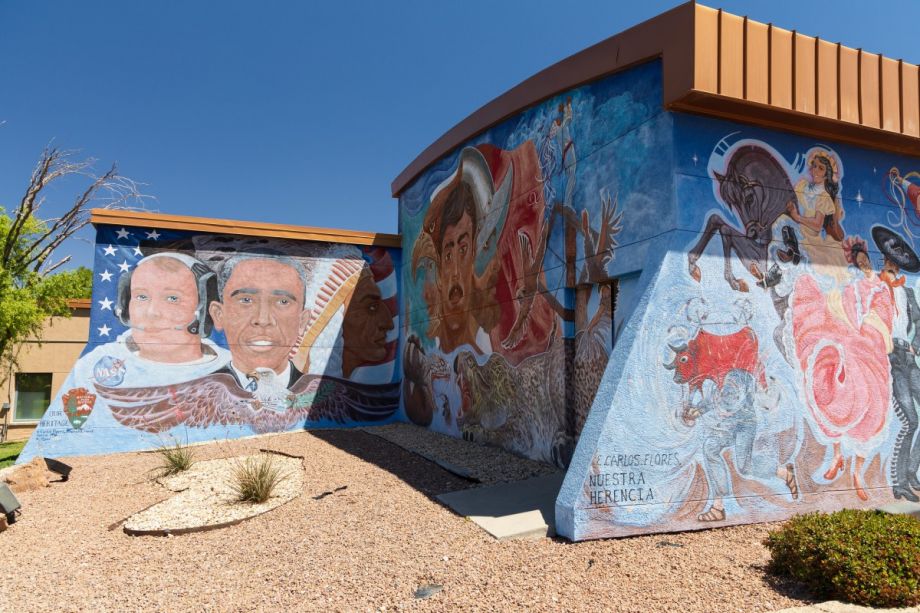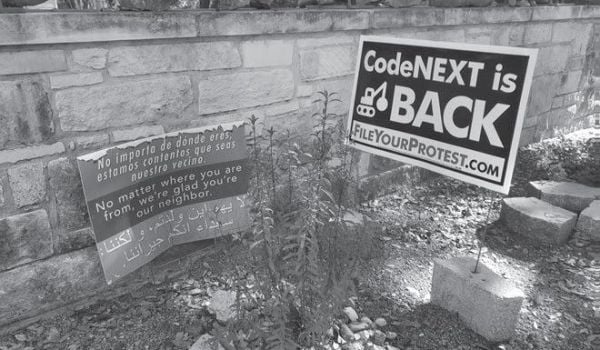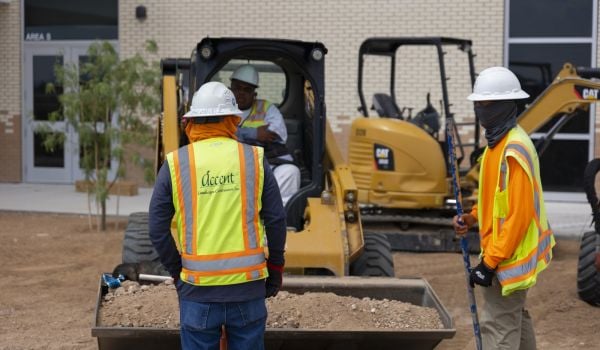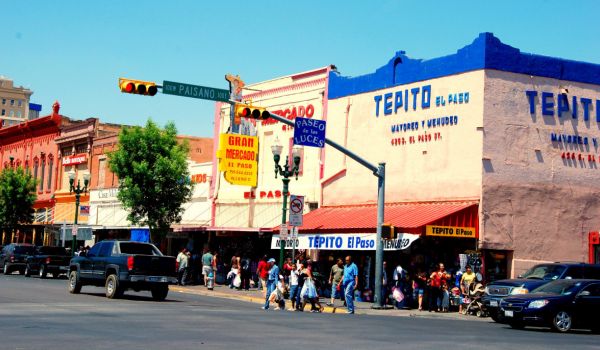This story was co-published with El Paso Matters and is the final piece in our joint Equitable Cities Reporting Fellowship For Borderland Narratives.
As the city of El Paso attempts to undo injustices of the past through a suite of new zoning code changes, they might face an uphill battle with neighborhood activists who believe the move might create gentrification in their barrios.
“We’re very concerned that the same history is gonna play out where they displace people,” says Hilda Villegas, a member of the Familias Unidas Del Chamizal (United Families of the Chamizal). The community group works in the Chamizal neighborhood in south central El Paso, one of the city’s oldest and poorest.
“Whatever they’re proposing is not for the people,” Villegas says. “It’s for others to come and take the opportunity over the community.”
The proposed changes are related to the downtown/uptown redevelopment plan, an infill policy adopted by the city council in 2021, and the city’s Onward Alameda master corridor plan, adopted in June, which envisions a new future for 13 miles on one of El Paso’s oldest corridors.
The new codes — including amended setback standards, removing minimum parking requirements and legalizing existing tenements — could be adopted in April or July of 2024 and broken into two phases, with more straightforward modifications first, followed by larger ones after receiving feedback from the public.
City officials say the aim is to create inclusive and healthy neighborhoods by targeting historic disinvestment and redlining through incentivizing infill and mixed-used developments, diversifying housing options, encouraging landmark preservation and expanding sustainable development practices.
In doing so, the City hopes to redress policies dating back to the 1930s, when El Paso adopted zoning codes that created mismatches “between city policies and goals from the market and what our residents want to see,” says City of El Paso CID Assistant Director Alex Hoffman.
“We knew that geographically, we needed to focus on these older neighborhoods in the city,” says Hoffman. “That’s where we see the biggest mismatch in development.”
The areas targeted include El Paso’s Downtown, Uptown and Five Points. The changes will affect regulations dealing with parking requirements and the number of units constructed before the 1930s.
“What we’re looking to do is, through this effort, make some very specific and targeted changes,” says Hoffman. “A lot of times, it’s legalizing what’s currently existing there today. We think that alone can really spark interest in investment and potential redevelopment.”
But distrust with city officials runs deep in the Chamizal and other historic neighborhoods targeted by the changes.
“We’ve seen it all the time that the city decides to invest in our communities. It leads to gentrification and displacement,” says Villegas.
She named a similar effort that displaced people at the Ruben Salazar Housing Project. The 21-acre public housing complex in the Chamizal was vacated in 2019 as part of the city housing authority’s Rental Assistance Demonstration (RAD) program and was slated for renovation two years later. After several delays, the $93 million renovations began in August and is expected to take more than two years to complete.
Meanwhile, hundreds of low-income, mostly-Hispanic families have been displaced; former residents will have to put their names on a waiting list once construction is completed.
“They went in and made these decisions without the knowledge of our organization and against the will of the residents because they moved the residents to the outskirts of El Paso,” says Villegas.
Hoffman says the new zoning changes are about being “responsive and proactive” to inequities.
“There was some documentation that shows that the number of mortgage applications, especially in South El Paso, are very minuscule in relationship to what we see at the citywide level.”
Major zoned commercial corridors would also be changed “to encourage this idea of having more mixed-use development,” he says. “The idea would be that there’ll be some commercial on the first floor, but maybe some multifamily above.”
Updating parking restrictions could encourage the use of public transport systems in the area, like El Paso’s bus rapid transit system or its free streetcars, to “support other investments that the city has made specifically in transportation,” says Hoffman.
“One of the ways that we can do that as getting more people living along these really specific corridors to help increase transit ridership and hopefully also, have a positive effect on some of the issues related to air quality and traffic congestion.”

Christian De Jesus Betancourt is Next City and El Paso Matters' joint Equitable Cities Reporting Fellow for Borderland Narratives. He has been a local news reporter since 2012, having worked at the Temple Daily Telegram, Duncan Banner, Lovington Leader and Hobbs News-Sun. He's also worked as a freelance reporter, photographer, restaurant owner and chef. Born and raised in Juarez, El Paso became Betancourt’s home when he moved there in the seventh grade.







_600_350_80_s_c1.jpg)








